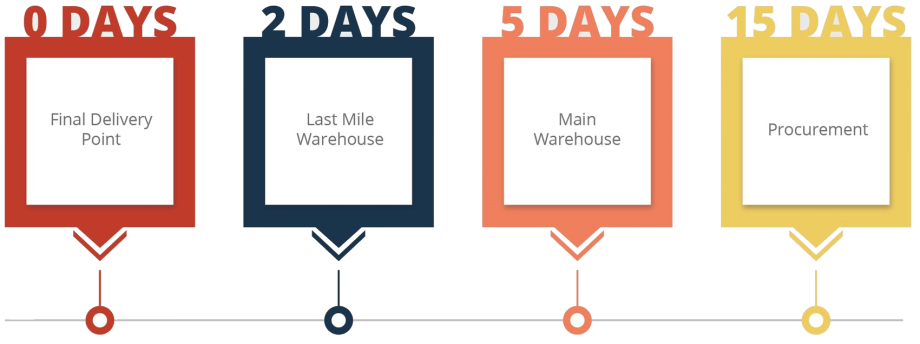This guide does not intent to address targeting or the decisions about what to distribute to who and other key questions; there should be a dedicated technical teams specializing in food security, WASH, education, shelter or other sectors that will have better input on these needs. However, due to the multiple activities needed to distribute commodities on time it is recommended to involve logistics personnel in the planning and decision making process. This will assure that what is decided could be feasible and that the decided plan makes sense alongside other logistics plans.
Distribution should occur once clear evidence informs the distribution plan. Unfortunately sometimes it is not possible to wait until full assessments are done, such as in the first phase of an emergency. In these situations, distributions may start without good planning in order to save lives and/or alleviate suffering, however it is strongly advised that some form of verification will still be necessary to ensure that the beneficiaries identified have legitimate need. A proper assessment will still need to be completed as soon as possible, but distributions can potentially start without assessments if planners gradually modify their content and systematisation to align with new evidence and contextual information.
Figures
Knowing how many people are affected by a disaster is essential to plan a distribution, however developing a reliable figure of the people in need is not always easy - wide differences can emerge among the numbers given by the authorities, UN Agencies, or those representatives of the population - and can undergo deep modifications over the time. In major natural disaster, the number of defined beneficiaries can change by the hour; and as time goes on, the initial registration numbers become unreliable because of births, deaths and population movement. Uncertainties about numbers are a constant, but it is key that all partners and key actors understand that the exact number of people in need of assistance will not always be known. As the program develops and more information is available, assumptions will change and distributions will more closely align with the verified needs.
Some form of registration is necessary for all distributions, but the type of registration may vary from simply estimating the total number of beneficiaries, to collecting detailed information on each family and/or individual. The method of registration used is closely linked to the system of distribution adopted, and either communities themselves or external agencies can register the potential beneficiaries of a program. In most programs, the initial list of beneficiaries is produced with the assistance of community leaders or by government officials. Registration is a continuous exercise, requiring regular verification by checking registration data, and comparisons with other estimates of population numbers.
Distribution Plan
A distribution plan needs to consider beneficiaries' interests, security and logistical constraints, the form and frequency of anticipated distributions, the number of individuals who will receive distributions, and the resources available.
If safe, logistically possible, and appropriate for the population, distribution of all items at once or over the course of a single day minimises the cost and effort for the distributing agency. Single distributions are also a more convenient arrangement for beneficiaries who have to travel long distances to reach distribution sites.
In other contexts, a phased approach may be more appropriate, with distribution occurring over multiple days, or even different distributions separated by multiple days. Phased delivery might be due to:
- Distribution space being dedicated to other activities.
- Delays or shortfalls in procurement of distributed items.
- National or religious holidays.
- Insecurity.
- Prior arrangements with beneficiary populations.
A phased approach can still meet the most urgent needs of a population, and focus can be placed on prioritised groups at high risk. A second or more rounds of distributions can then follow accordingly.
A distribution schedule must be designed carefully. It should include a clear schedule of working hours and set a realistic distribution target. The schedule should be shared with logistics focal points for warehousing and transport to ensure that commodities can be prepared and delivered as planned.
A good way of planning the supply movement of a distribution is to roll back the time required for preparation based on an expected day of distribution.
| How many days for preparation and delivering the supplies to the distribution site? | What’s the transportation time between the main warehouse and the field location? | How long does it take to source the item? Are they available in the market? |
|---|
If a distribution is intended on the day D, logistics should trigger the reception at:
Pragmatism is essential, but problems may arise when the original technical principles are forgotten.


